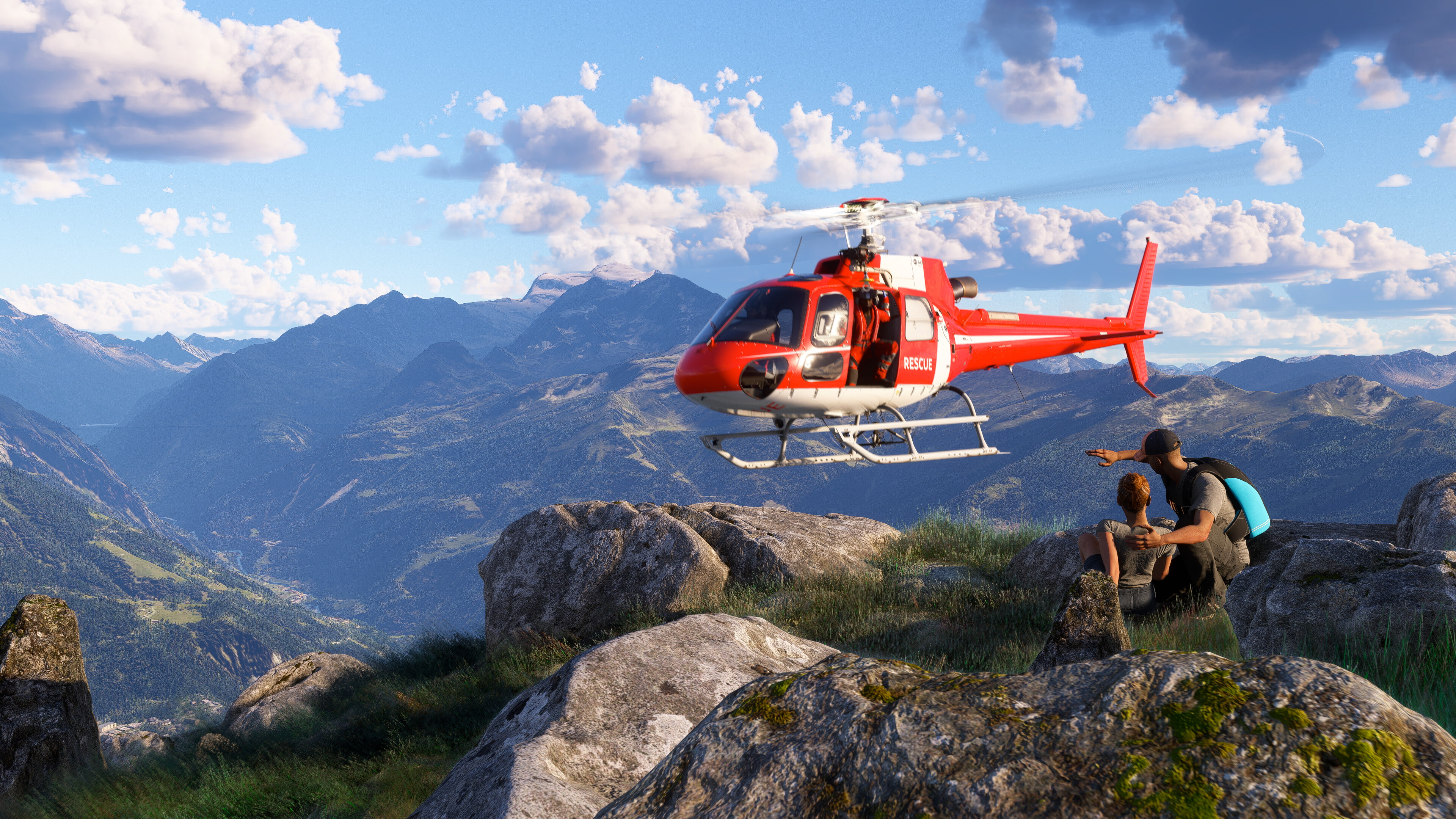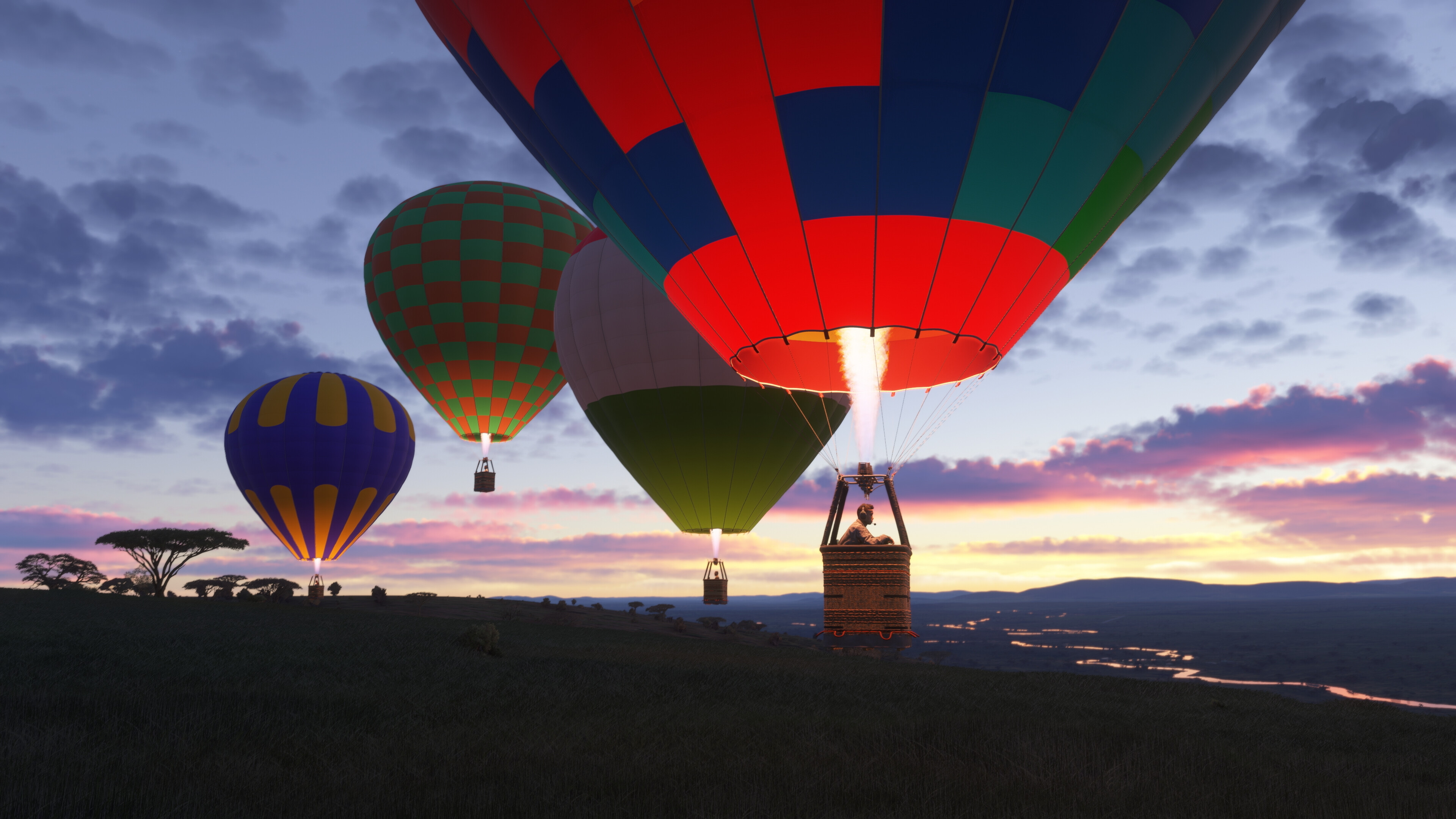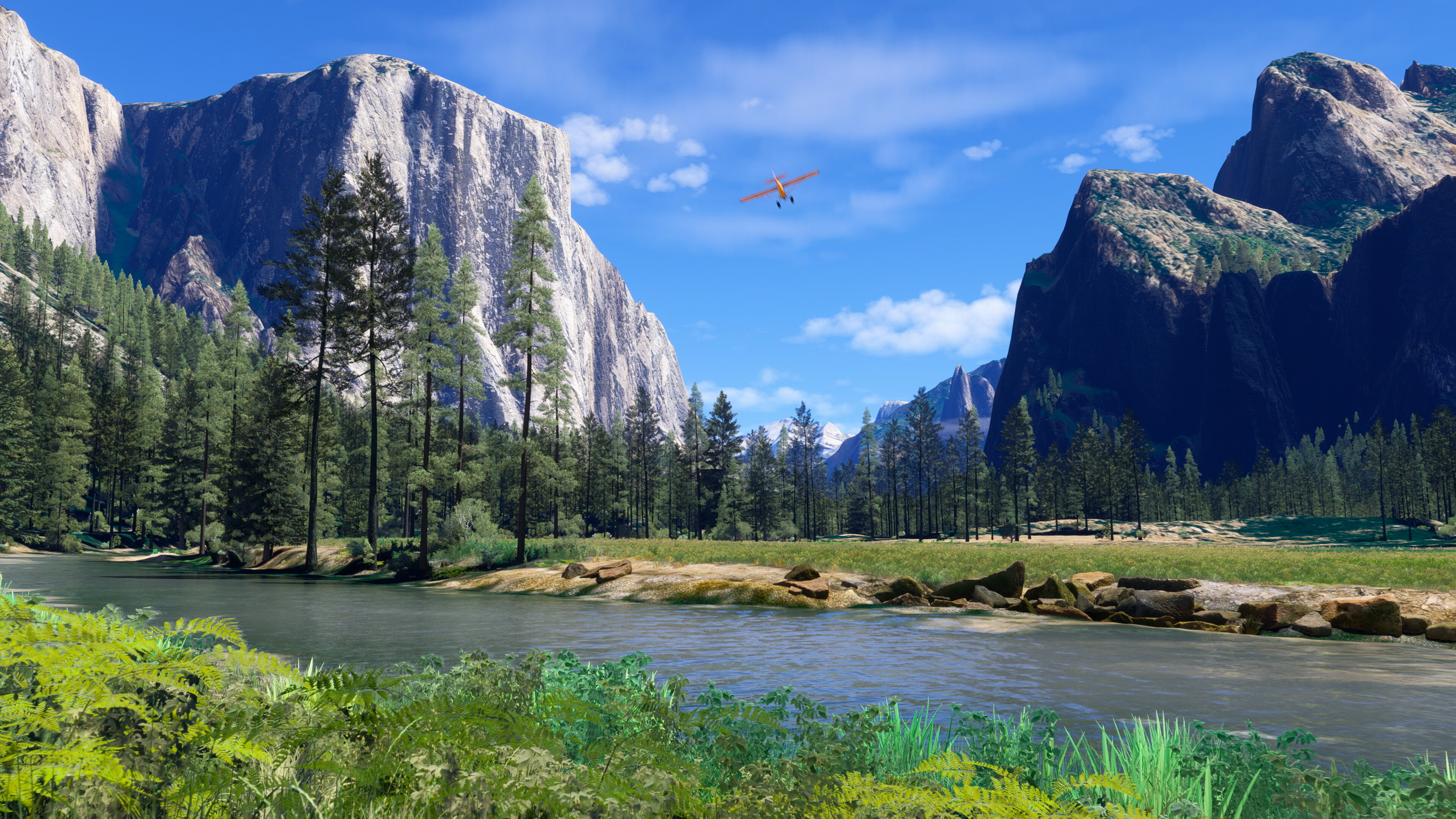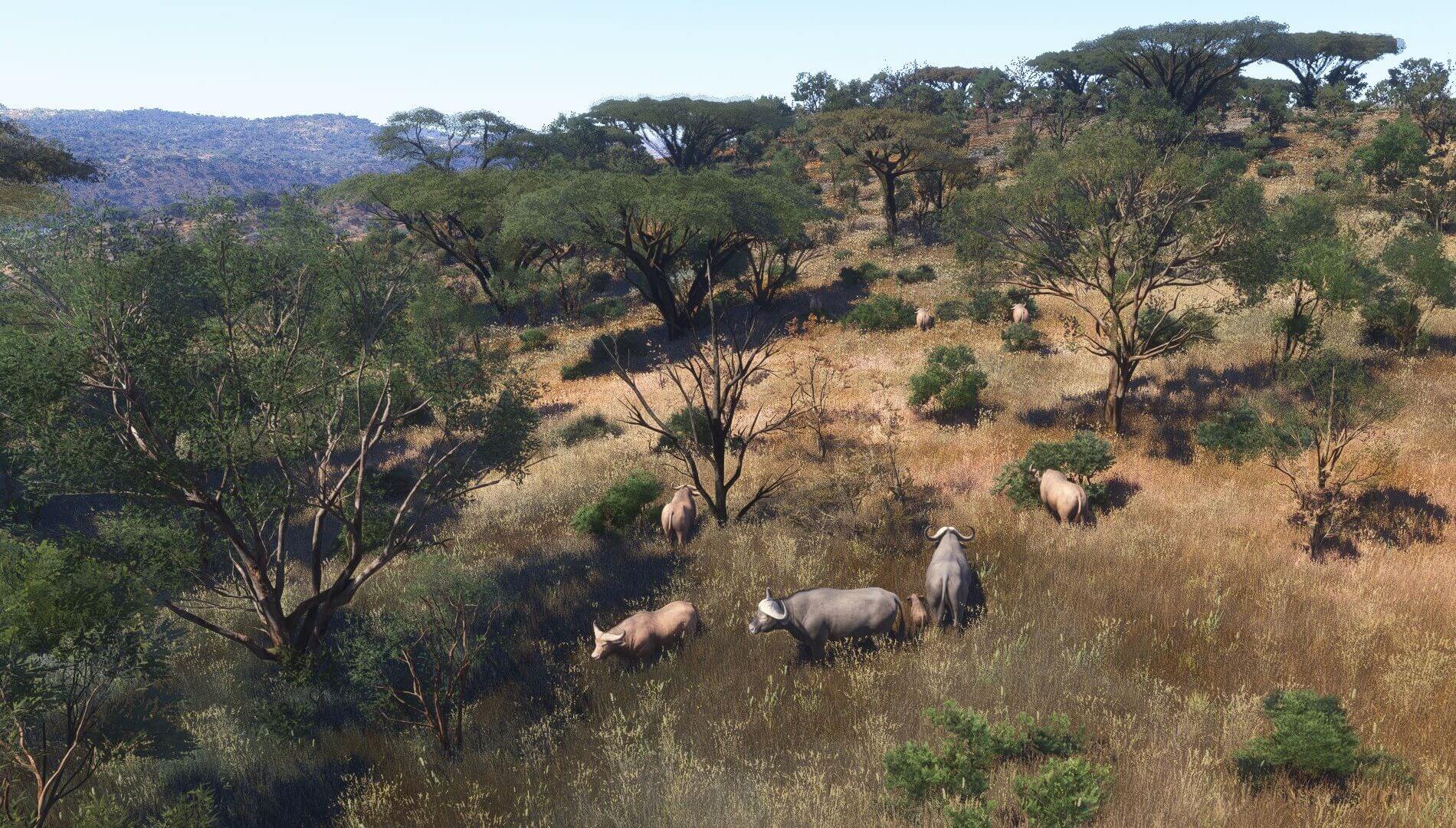
Microsoft Flight Simulator was a revelation. When it was released back in 2020, the software broke new ground with its full-scale 3D representation of the Earth, highly detailed real-time weather effects, and one of the most realistic flying physics models put into a video game. Its impressively life-like visuals meant that exploring new places, revisiting old holiday spots, or even landing outside your own house felt like a magical, once-in-a-generation gaming experience.
Now developer Asobo Studio seems on track to do it all again with Microsoft Flight Simulator 2024, which releases today for PC, Xbox Series X, and Xbox Series S. With virtual pilots all around the world gearing up for their first flights, we’ll soon find out whether the studio was successful.
In the build-up to the game's launch, I sat down with Asobo CEO Sebastian Wloch to discuss all things Flight Simulator and dive deep into some of this installment's biggest innovations.
The complete package

As one of the many who spent a cool $119.99 / £109.99 on the Premium Deluxe Edition of Microsoft Flight Simulator just a few years ago, I’m keen to discover what the developers think will most tempt existing owners to splash out for the upgrade. “There's a lot of new content,” Wloch begins. He points out that any aircraft or airports that you already own are automatically carried over into Flight Simulator 2024, “but then there's a lot of new planes” to discover too which have all “been reworked and improved” through an overhauled flight model.
Wloch argues that the differences should be drastic, mimicking an ‘L’ shape with his hands as he details how “in Flight Simulator 2020 every aircraft had one fuselage, one wing, one key tail like this, and that was it. The shape was very limited.” In contrast, “in 2024 the definition of the aircraft in the flight model is a lot more accurate - even the engines are simulated. They have their own shape and also new airflow simulation, wake turbulence, and a lot of new improvements there.”
Real-world data was integral to improving the realism of the simulation, with the developers using a new process where they “now record aircraft in the real world and in the sim to compare and make them so that they are really the same.”
This is going to be fantastic news for the most dedicated pilots, but there are also plenty of improvements that more casual players will appreciate. “A very important thing is also the loading time and disk use in the whole system,” Wloch says. “For 2020, the first install was 130 or so gigabytes,” a figure that only increases when you begin to install additional world updates and other content.
“We have measured the first install now and I would say it’s around 30 gigabytes - about three times smaller,” he shares. Loading times have also been significantly reduced and, to put it all in real-world terms, “with a 2GB per hour [download speed], it takes 50 hours of gameplay to just catch up to the install of 2020” allowing players to get into the cockpit quicker right off the bat. The reduction of file sizes will be especially important for Xbox players, where storage space is significantly more limited than on most desktop PCs.
Every player will also be able to experience the new modes of transport introduced in Flight Simulator 2024. “We've added balloons and a fly-doo which is also a balloon, but with a little engine. These have an all-new physics engine for tissue and all the little ropes which attach the balloon to the basket, so they're all simulated, Wloch says. “There's a whole bunch of new helicopters” and a handful of the aircraft from Flight Simulator 2020 now offer “new versions which have a new flight model.” He is, however, quick to add that returning players will still be able to use the original flight model if they prefer.
More detail than ever

The flying may have been improved across the board, but modern technology has also been leveraged to take the fidelity of the world to new heights. “The amount of detail between 2020 and 2024 is about 4,000 times more, whether that's texture resolution or terrain mesh,” Wloch says. While there are some hand-crafted areas, developing a full recreation of the world from scratch would be an impossible ask for any developer. Luckily, that’s where artificial intelligence (AI) comes in.
“We have sets of trees, plants, rocks, and types of minerals [...] it's like small areas like a rocky area or so,” he outlines. “Then we have AI machine learning. We trained it by looking at satellite photos and recognizing, ‘this is sun’ or, ‘this is rocks’. ‘This is a field, this is a corn field’ and all that. It was trained to recognize what the countryside is, what it's made of.” This AI assistance allows for the placements of these sets to correspond with the real world, including for subtle gradients where materials are mixed. “You train it to recognize maybe 40 types of ground and it's gonna say this is 50% corn, 5% sand, and then we mix together these different sets based on what the AI has found.”
Seasons are also being introduced, which Wloch describes as “really the missing piece.” Flight Simulator “already had real-time weather and seasonal weather in 2020, so the temperatures, the wind, the pressure, the rain, everything already matched seasons, but the world always looked the same.” Now he says that colors will change depending on the time of year, “grass, trees, plants, fields, they all have seasons, and so, for example, the fields are going to be brown in the winter. Some trees will have lost leaves. In the autumn, some leaves turn red or yellow and some stay green. We have evergreen trees, but that's all simulated.” In short, "in winter, it looks like winter, and in summer, it looks like summer. It feels more like you're there.”
It's like a zoo in here

The world has received a fresh coat of paint, but there has also been plenty of love for its inhabitants. Animals now roam around realistically, added in collaboration with Planet Zoo creator Frontier Developments. “We have data that gives us seasonal density worldwide per species,” Wloch says, “so basically you will only find the animals where they are supposed to be, depending on the seasons and depending where you are. There’s over 100 different species.”
More human characters have also been introduced, with “a lot of shapes, faces, face types, hair types,” to accurately represent the diversity of the human population. Players will be able to get a taste of this when they first boot up the new career mode, which opens with a detailed character creator. Wloch claims that this career mode offers “3 million missions around the entire planet” with a variety of activities that have been designed to mirror the careers of real-world pilots.
“Most pilots, what do they do? After they get the Private Pilots License (PPL), they fly a few friends then they try to get a commercial license, which allows them to make money,” he explains. “Then they will start to do some charter flights, fly planes around, and maybe do a little bit of paid tourism - flights to go visit something. Then maybe transportation. Then after some time, you become an airline pilot.” There’s even firefighting, which challenges players to scoop up water with their plane, and skydiving missions where you drop off thrill seekers at high altitudes.
"Every one of us took a few flights, like two or three, but that's really just to discover a little bit and get a feel of it"
Sebastian Wloch
Wloch’s own experience as an amateur pilot shines through in our conversation, but I’m curious to find out just how much flying the rest of the development team has under their belts. “Every one of us took a few flights, like two or three, but that's really just to discover a little bit and get a feel of it,” he says. “A handful, like five or six, did take the PPL training and some of them passed it. But then as we developed in 2020 we started hiring people who had more experience, such as people who had already been instructors and some ex-pilots from the military.”
“Today we have a team where there are a few, maybe ten or so, people who have thousands of hours. I'm 50, there's no way I'm gonna make thousands and thousands of hours of flying. These people do aircraft design, mission design, all sorts of things.”
As for how Microsoft Flight Simulator 2024 compares to the real thing, Wloch modestly calls it an eight out of ten on the realism scale. “There's things you cannot simulate because you are still sitting in front of a TV or a desk. You don't feel any of the G force. You don't feel the oxygen level going down when you go up in altitude,” he begins. “The real aircraft has a yoke where you feel the heaviness of the aircraft. On some aircraft, you can even feel if you have passengers or not.”
He also points out that a simulator can’t yet recreate the aroma of a real aircraft, which reportedly mostly “smell like gasoline”. Perhaps some particularly dedicated digital aviators will be able to track down an airplane-flavor scented candle for the most authentic experience while taking to the skies today.







